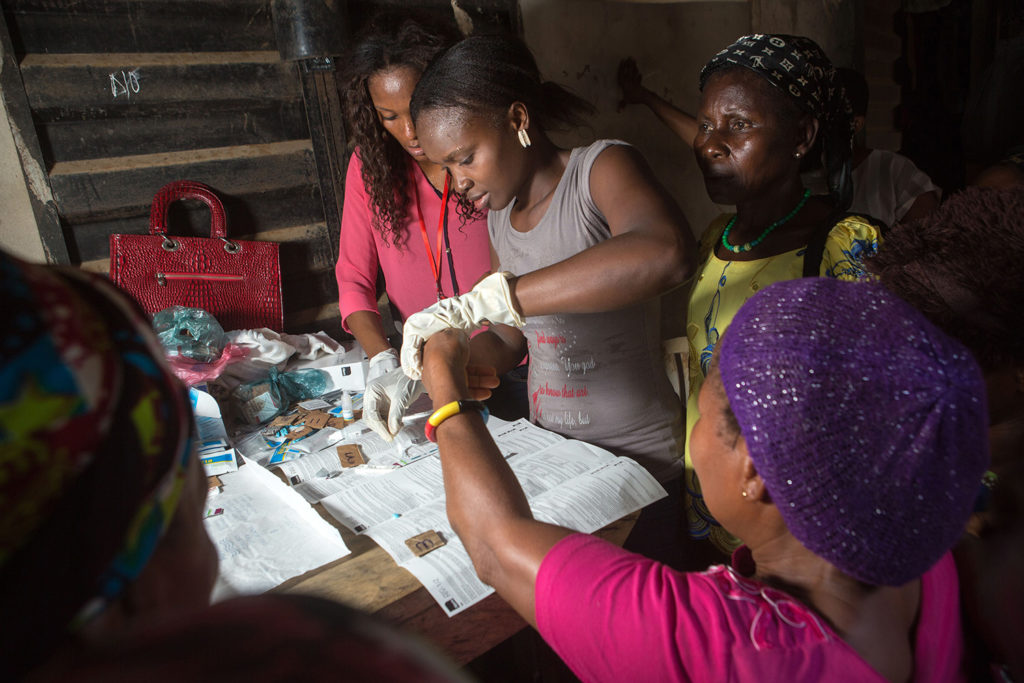Care and Treatment for Sustained Support
Care and Treatment for Sustained Support

Overview
The Care and Treatment for Sustained Support (CaTSS) Project was implemented in close partnership with the Government of Nigeria and local partners. Funded by the US President’s Emergency Plan for AIDS Relief (PEPFAR) through the US Agency for International Development (USAID), the project advanced Nigeria’s efforts to achieve HIV epidemic control and reach the ambitious 95-95-95 goals: 95% of people living with HIV are diagnosed; 95% of those diagnosed HIV positive are started on antiretroviral therapy (ART); and 95% of people currently on ART are virally suppressed. The project improved case finding and treatment outcomes for HIV and AIDS and TB across Niger, Kwara, Kebbi, Sokoto, and Zamfara states in North West Nigeria.
To support self-reliance and sustainability, CaTSS implemented a peer mentorship program that transferred critical HIV patient and program management skills to frontline health workers and state ministries of health. This initiative enhanced the capacity of state governments to plan, manage, and lead HIV and AIDS and TB programs at the state and local government levels while strengthening the capacity of health care facilities to provide quality HIV and AIDS and TB services.
CaTSS managed the introduction of new policies such as Test and Start and new programmatic requirements such as high-frequency data reporting. The CaTSS-supported deployment and use of the electronic medical record system in all project-supported facilities significantly improved the project’s ability to respond to the demand for frequent data reporting and ensure patient-centered quality of care. This positioned health care facilities to improve testing efficiencies, linkage, retention, and viral suppression among patients.
Highlights
- Tested more than 1 million people for HIV and supported nearly 35,000 people to adhere to lifesaving ART.
- Increased the percentage of new HIV-positive individuals linked to HIV treatment from less than 65% to 98% by the end of 2019.
- Significantly improved viral load testing and viral suppression rates in project-supported facilities and states. By the end of the project, 94% of patients on ART had their viral load tested, and 85% of those had an undetectable viral load, making them much less likely to transmit the virus to partners or children.
- Scaled up index case testing to reach sexual partners and biological children of newly diagnosed people who may not know their HIV status. In 2020, 96% of newly identified positive clients at project-supported facilities were offered index case testing and the case identification rate to 22%, compared to 4% in 2018.
- Worked with facility staff to scale up the transition to the WHO-recommended first-line antiretroviral regimen known as TLD, placing more than 83% of its overall client load on TLD by December 2019.
- Provided 415,624 pregnant women who attended antenatal care in supported health facilities with HIV testing services with same-day results. Of the newly identified HIV-positive pregnant women, 97.3% were started on ART to prevent mother-to-child transmission.
- Rapidly scaled up the implementation of the OpenMRS electronic medical record system in 107 health facilities.
Realizing Nigeria’s Vision for an HIV-free Future: The Care and Treatment for Sustained Support (CATSS) Project Final Report
Addressing HIV/AIDS will boost economic recovery efforts
Donors & Partners
Donors
The United States Agency for International Development
The United States President’s Emergency Plan for AIDS Relief